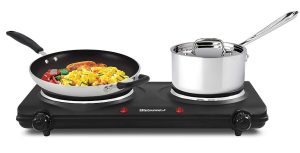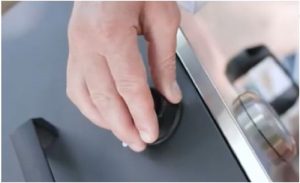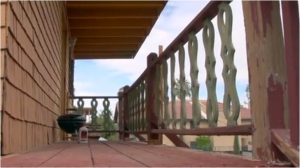How to Remove Rust from Coffee Maker Hot Plate?
To remove rust from a coffee maker hot plate, use a soft cloth, white vinegar, and baking soda. This method effectively cleans rusty hot plates and restores their appearance.
Rust on coffee maker hot plates is a common issue that can be addressed with simple household items. Removing rust from these surfaces not only improves the appearance of the appliance but also ensures better performance and longevity. In this article, we will discuss the process of cleaning rusty hot plates and provide valuable tips for maintaining them.
Begin by mixing equal parts of white vinegar and baking soda to create a paste. Apply this paste to the rusty hot plate, ensuring that the entire affected area is covered. Allow the mixture to sit for a few minutes, giving it time to break down the rust.
Using a soft cloth, gently scrub the surface to remove the rust and the paste. Be careful not to scratch the hot plate during this process. Once the rust is removed, wipe the surface clean with a damp cloth and dry it thoroughly.
For those looking to clean rusty stove hot plates, the same method can be applied. The combination of white vinegar and baking soda is a powerful cleaning agent that effectively removes rust without causing damage to the surface.
Regular cleaning and maintenance of hot plates can prevent the buildup of rust and keep your appliances looking and functioning at their best.
Related: How to Clean Hot Plate?
Rust Formation On Coffee Maker Hot Plate
Rust formation on a coffee maker hot plate is a common issue faced by many coffee enthusiasts. This problem occurs due to the presence of moisture and oxygen, which react with the metal surface of the hot plate, leading to the formation of iron oxide or rust. The presence of rust not only affects the appearance of the coffee maker but can also impact its performance and longevity.
The reason for rust formation is the constant exposure of the hot plate to water and steam during the brewing process. As the hot plate heats up, it evaporates the water, leaving behind minerals that can cause rust.
Moreover, if the coffee maker is not cleaned and dried properly after each use, the residual moisture can lead to rust formation over time.
Another factor contributing to rust formation is the quality of the materials used in the construction of the hot plate. Lower-quality metals are more susceptible to rusting, especially if they are not coated with a protective layer.
In such cases, it is essential to take extra care in maintaining the hot plate to prevent rust formation.
Read More: Can You Put Hot Plates on Granite
How to Remove Rust from Coffee Maker Hot Plate?
Step 1: Gather the necessary materials
To remove rust from the coffee maker hot plate, you will need the following items: white vinegar, baking soda, a soft cloth or sponge, a soft-bristle brush, and a clean, dry towel.
Step 2: Unplug the coffee maker
Before starting the cleaning process, ensure that the coffee maker is unplugged and cooled down to avoid any risk of injury or damage.
Step 3: Create a vinegar solution
Mix equal parts of white vinegar and water in a bowl or container. This solution will help to dissolve the rust and loosen any stubborn stains on the hot plate.
Step 4: Apply the vinegar solution
Dip the soft cloth or sponge into the vinegar solution and gently rub it onto the rusted areas of the hot plate. Allow the solution to sit for a few minutes to break down the rust.
Step 5: Scrub the rusted areas
Using a soft-bristle brush, gently scrub the rusted areas to remove the loosened rust particles. Be careful not to scratch the surface of the hot plate.
Step 6: Create a baking soda paste
In a separate container, mix baking soda with a small amount of water to create a thick paste. This paste will act as a mild abrasive to help remove any remaining rust.
Step 7: Apply the baking soda paste
Spread the baking soda paste onto the rusted areas of the hot plate, and let it sit for a few minutes to further break down the rust.
Step 8: Scrub with the baking soda paste
Using the soft-bristle brush, gently scrub the rusted areas again to remove any remaining rust particles. Be sure to rinse the brush frequently to avoid spreading the rust.
Step 9: Rinse the hot plate
Once the rust has been removed, use a clean, damp cloth or sponge to wipe away the baking soda paste and any remaining rust particles. Rinse the cloth or sponge frequently to ensure a thorough cleaning.
Step 10: Dry the hot plate
After rinsing, use a clean, dry towel to thoroughly dry the hot plate. Make sure there is no residual moisture left on the surface, as this can lead to further rust formation.
Step 11: Apply a protective coating (optional)
If desired, apply a thin layer of a food-safe silicone spray or another protective coating to the hot plate to help prevent future rust formation. Follow the manufacturer’s instructions for proper application and drying times.

Tips For Maintaining a Coffee Maker Hot Plate
1. Clean the hot plate regularly: To prevent rust formation, it is crucial to clean the hot plate after each use. Use a soft cloth or sponge to wipe away any residue or moisture. Avoid using abrasive materials, as they can scratch the surface and make it more prone to rusting.
2. Dry the hot plate thoroughly: After cleaning, ensure that the hot plate is completely dry before storing or using the coffee maker again. This will help to minimize the risk of rust formation due to residual moisture.
3. Use a protective coating: Applying a thin layer of protective coatings, such as a food-safe silicone spray, can help to prevent rust formation on the hot plate. This coating acts as a barrier between the metal surface and moisture, reducing the chances of rusting.
4. Store the coffee maker in a dry place: Storing the coffee maker in a dry and well-ventilated area can help to reduce the risk of rust formation. Avoid placing it in damp or humid environments, as this can promote rusting.
5. Inspect the hot plate regularly: Regularly inspect the hot plate for any signs of rust or damage. If you notice any rust spots, address them immediately by cleaning the area and applying a protective coating.
6. Invest in a high-quality coffee maker: Choosing a coffee maker made from high-quality materials and with a rust-resistant hot plate can help to minimize the risk of rust formation.
While these models may be more expensive, they can save you time and effort in maintaining the hot plate and prolong the life of your coffee maker.
FAQs
FAQ 1: What causes rust on a coffee maker hot plate?
Rust on a coffee maker’s hot plate is caused by the combination of moisture, oxygen, and metal. The constant exposure to water and steam during the brewing process, along with improper cleaning and drying, can lead to rust formation over time. Lower-quality metals are more susceptible to rusting.
FAQ 2: Can rust on a coffee maker hot plate affect the taste of my coffee?
Yes, rust on a coffee maker hot plate can potentially affect the taste of your coffee. Rust particles may mix with the brewed coffee, altering its flavor and quality. It is essential to remove rust and maintain the hot plate to ensure the best-tasting coffee.
FAQ 3: Is it safe to use a coffee maker with a rusted hot plate?
Using a coffee maker with a rusted hot plate is not recommended, as rust can contaminate the brewed coffee and affect its taste. Rust can weaken the hot plate’s structure, posing a potential safety hazard. It is best to remove rust and maintain the hot plate properly.
FAQ 4: How can I prevent rust formation on my coffee maker hot plate?
To prevent rust formation on your coffee maker hot plate, follow these steps:
1. Clean the hot plate regularly,
2. Dry the hot plate thoroughly,
3. Use a protective coating,
4. Store the coffee maker in a dry place,
5. Inspect the hot plate regularly, and
6. Invest in a high-quality coffee maker.
FAQ 5: Can I use commercial rust removers on my coffee maker hot plate?
While commercial rust removers can be effective, it is essential to ensure that they are food-safe and suitable for use on coffee maker hot plates. Always follow the manufacturer’s instructions and rinse the hot plate thoroughly after using any rust remover to avoid contaminating your coffee.
FAQ 6: How often should I clean my coffee maker hot plate to prevent rust?
To prevent rust formation, it is recommended to clean your coffee maker’s hot plate after each use. Regular cleaning and drying will help minimize the risk of rust and prolong the life of your coffee maker.
FAQ 7: Can I replace the hot plate if it is severely rusted?
If your coffee maker hot plate is severely rusted and cannot be cleaned, you may need to replace it. Check with the manufacturer for replacement parts or consider investing in a new, high-quality coffee maker with a rust-resistant hot plate.
Read Also: Hot Plate Vs. Bunsen Burner: The Comparison





